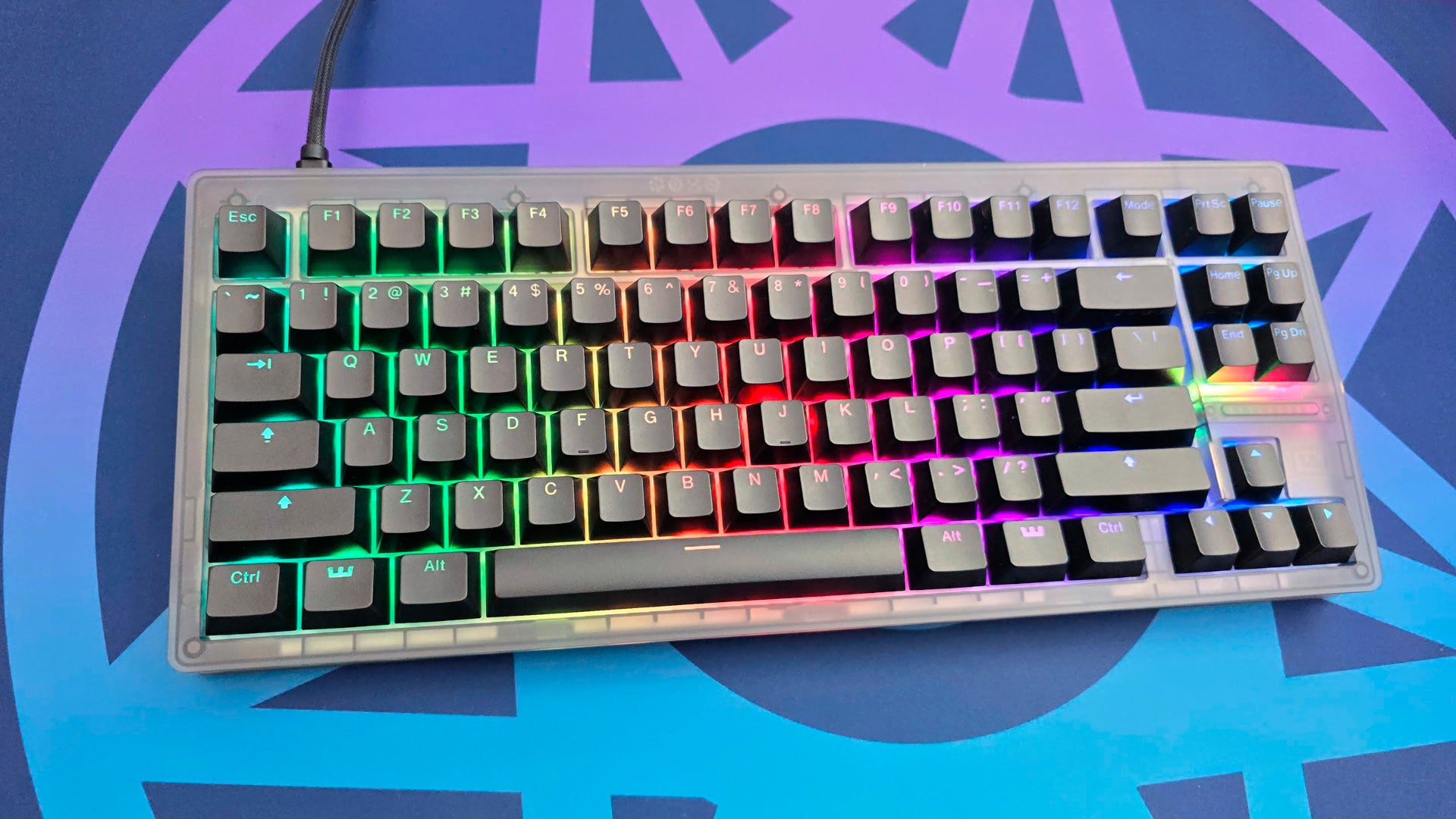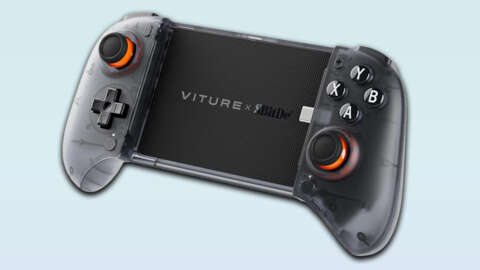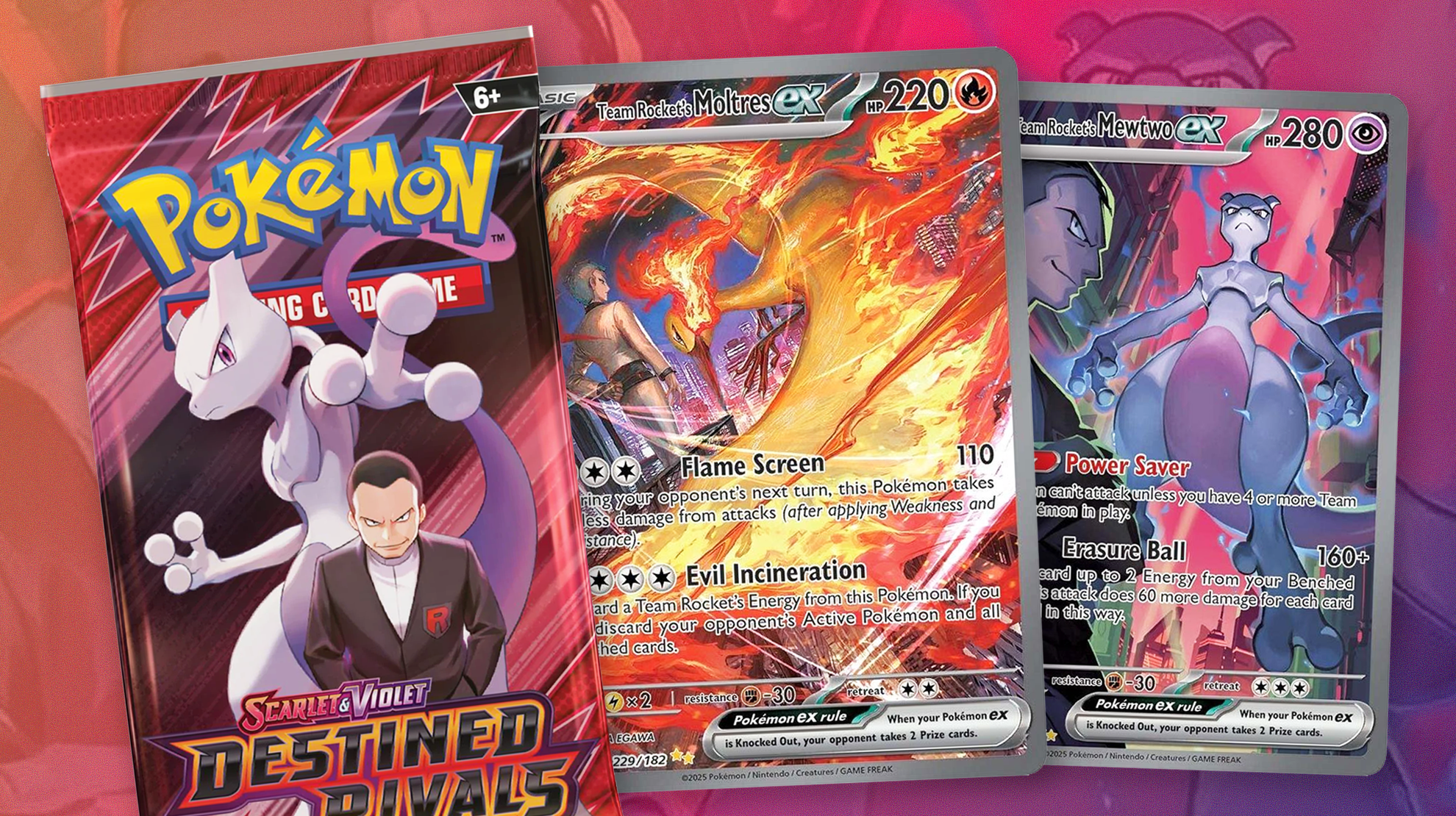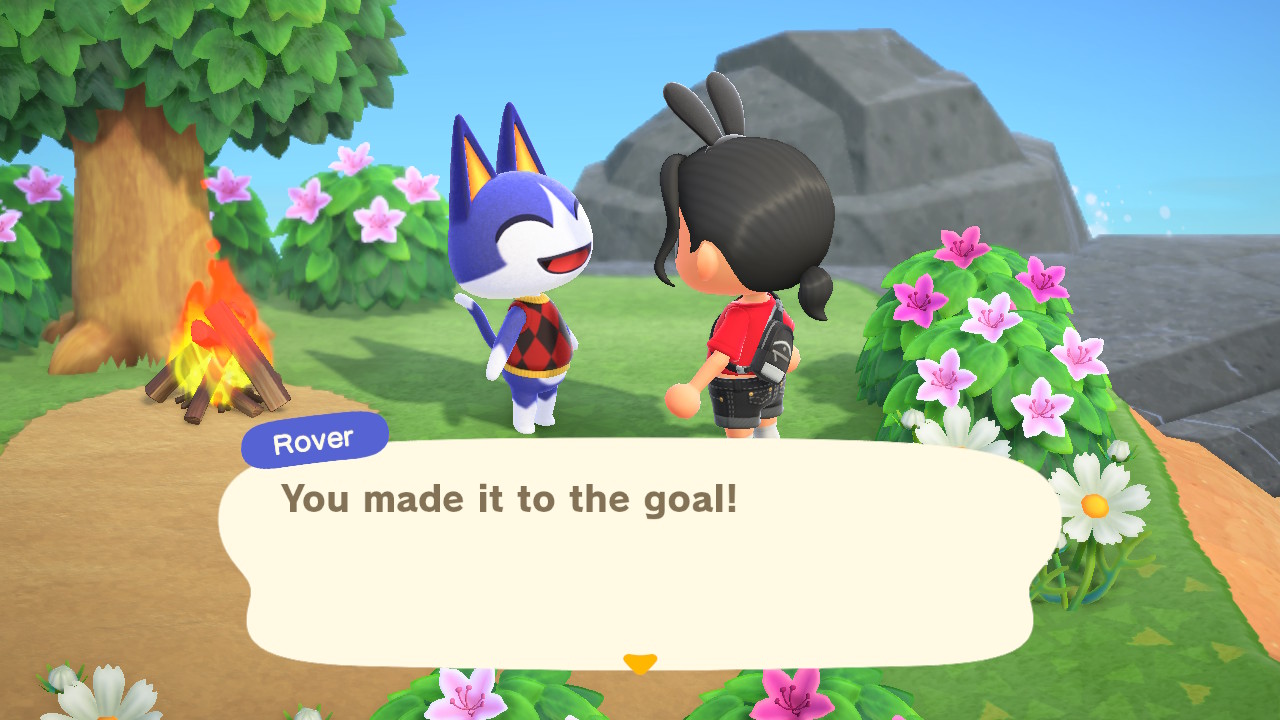It’s no exaggeration to say that the Wooting 60HE changed the competitive gaming landscape. It wasn’t even Wooting’s first gaming keyboard with Hall Effect switches, but it was the first to explode into the mainstream and redefine what competitive gamers should expect when looking for the best gaming keyboard. The Wooting 80HE is its successor and launched into a whole different landscape. Magnetic switches (Hall Effect) on keyboards are common now and can be found affordably, and many of the 60HE’s most novel features have been copied and built upon; it’s enough to make you wonder if the Wooting 80HE would be able to find its place when so many new competitors have crowded the market.
I’ve spent more than a month with it to find out the answer to that question and, good news, while many of its features may not be unique anymore, it manages to impress enough that even 60HE owners should consider moving to the Wooting 80HE.
Wooting 80HE - Design and Features

The Wooting 80HE is an 80% keyboard, but it’s probably not exactly what you’re thinking of. When companies use that term, most often they mean that the keyboard is tenkeyless: a full-size keyboard with the number pad chopped off. But that’s not the case here. Wooting went with a more unique layout, squeezing everything closer together, and condensing the navigation and editing section down to two columns and adding a dedication mode switch button next to the function row.
It's unconventional, but it works well. Unlike the 60HE, which was ultra-compact and far less functional as a daily driver because of it, the 80HE instantly felt right. Even with its different sections compressed together, it takes almost no time to adapt to. And because it has a function row, arrow keys, and the most important navigation and editing buttons, it’s just as easy to use outside of gaming.
Looking to upgrade your mouse, too?
Be sure to check out our roundup of the best gaming mice!
By default, the keyboard comes in a plastic case, but Wooting sent along its more premium zinc-alloy option for me to try as well. Neither is cheap at $199 for the plastic version and $289 for the zinc, but both have their appeal. I was sent the Ghost version of the plastic case, which is frosted, translucent black. It plays well with the RGB lighting, spilling hues across the board for a look that’s partially glowing no matter what angle you see it from but isn’t uniform anywhere but beneath the keys. The zinc version is heavy and solid, and it feels every bit as premium as its price tag.
While I think both need a price cut in a market that has no shortage of gaming keyboards with magnetic switches, Wooting manages to make both versions look good. The cases aren’t simple rectangles. The front and sides blend contours and rounded corners with slight lips on the upper case that play with shadows and make it easier to pick up and move around a desk. Of course, if you don’t care about the look of your keyboard, then you have a light plastic one and a heavy metal one and that’s the biggest difference you should concern yourself with.

Both cases are packed with tiny details that give it a personal touch. Flip it over and you’ll see the signatures of Wooting’s team engraved on the bottom of the case. Inside, the bottom of the PCB is covered in a black sheet that calls out all of the tiny components that make the keyboard tick and gives little explanations of what each piece does.
Outside of these small endearing touches, the 80HE shows how much the company has listened to its community. All the staple features that made the first version such a hit have returned. The switches are still magnetic and can be set to any actuation point you choose (between 0.1 mm to 4.0 mm). It supports Rapid Trigger, so you can make the switches reset as soon as you raise your finger for faster inputs. You can emulate a gamepad for analog input control in games. Everything is remappable with the ability to assign up to four actions to a single key press, it has per-key RGB, hot-swappable switches, the works. It lacks nothing compared to the 60HE.

Instead, what you gain is dramatically improved measurable responsiveness. While many peripherals claim 8000 Hz polling rates these days, Wooting introduces us to the concept of scan rate. While polling rate is how often the keyboard reports its state to the computer, scan rate is how often the keyboard scans itself for key presses.
On most keyboards with 8000 Hz polling rate, these two rates are out of sync. The keyboard might report to the computer 8,000 times a second, but if it’s not scanning itself just as fast, it’s leaving performance on the table. The Wooting 80HE, on the other hand, offers a Tachyon Mode that syncs both rates for the lowest possible latency.
Here’s the thing, while it’s certainly a bragging right for Wooting, even when those two rates are out of sync, you would need to be a machine to tell the difference. So, kudos is deserved for delivering one of the most responsive gaming keyboards ever made, but this is a measurable difference only. The practical benefit is the self-confidence that comes from owning such a high-performance peripheral.
And make no mistake, top-tier performance is exactly what Wooting fans and competitive gamers want. It’s why the Wooting 60HE was so successful and the 80HE delivers more of it in a much friendlier layout.

The 80HE also introduces a new light strip that doubles as an indicator light. It looks like a simple RGB light like any other at first, but it can be set to visualize different functions, like showing how far a key is being pressed or highlighting which profile you’re using. It’s a small but neat touch.
The company has also made major improvements with the typing experience. The 80HE now uses sound dampening silicone beneath the switches to decrease their volume and make typing sound more pleasant. Small strips protrude from the sides and are sandwiched between both halves of the case to produce a gasket mount, isolating vibrations from carrying through to the case. The tape on the back of the PCB is another component of the keyboard’s sound, adding a slight pop to each keystroke. These three elements combine to deliver a typing experience that’s softer, less fatiguing, and more pleasant to the ear – a direct response to one of the most common criticisms levied at its predecessor. The Wooting 60HE just didn’t sound very good.
The switches themselves are much improved. The 80HE comes with Lekker V2 switches in either 60g or 45g weights. Both are pre-lubed for added smoothness, which was already very good. They feel nicer to game with, sound better to type on, and offer 0.1 mm to 4.0 mm of customizable actuation range. And because there’s no mechanical contacts inside, there are fewer elements that can break down over time. Compared to mechanical switches, they’re far more durable.
There’s only one bit of strangeness to speak of and, of all things, it’s the keyboard’s feet. It uses three sets of interchangeable wedges for 2.8-, 6.0-, and 9.0-degree angles. They look out of place compared to the rest of the keyboard. The largest set straight up looks upside down to my eye. This system does allow the zinc-alloy case to offer customizable typing angles but even from the side it looks weird.

Wooting 80HE - Software
Like all Hall Effect keyboards, software plays a hugely important role for the Wooting 80HE. Wooting calls it Wootility and it’s where you’ll access all of the keyboard’s advanced features, like Rapid Trigger and Tachyon Mode, control its RGB backlighting, and assign key remaps. Wootility is available as a download or through your browser in its web version. After you visit the site the first time, it stores all of its data in the background so it’s accessible offline, freeing you from any kind of online requirement or the need to download a standalone app to take up your storage space.
Despite running in a browser window, Wootility is full-featured and offers a polished presentation. It’s so refined that you could honestly mistake it for a full-fledged downloadable software suite, and is an object lesson to smaller brands trying to crowd in on Wooting’s space. You can store multiple profiles of keymaps and settings, helpfully broken down into templates for different genres and purposes (FPS, Racing, Typing, Analog Movement), or you can start completely from scratch.
From that point on, all the settings are there, including real time animations for the actuation point, so you can know exactly how each depth feels to guide your settings. The aforementioned Tachyon Mode is another option here (which syncs the keyboard’s polling rate and scan rate) It works as a toggle, but also limits you to static RGB lighting with brightness that’s above half as the normal setting.
Wooting also goes all-on on customization of that lighting strip above the arrow keys. The configurator lets you keep things simple and match the rest of the keyboard’s lighting, but it can also be set to change color based on things like typing speed or indicating which profile you have active. Or, most usefully, it can be set to act as a depth meter for your keystrokes. There’s no way to make your actuation point display, which would be helpful to see how close you are to registering your action, but it’s a cool figure that’s useful as you learn how different depths of actuation points feel.
If there’s a feature you’ve seen on a Hall Effect keyboard before, there’s a good chance you’ll find it here. Rapid Trigger has its own tab, but if you click on the Advanced Keys tab, you’ll find SOCD (also known as Snap Tap with Razer), which allows key presses to overwrite one another for rapid movement that’s otherwise impossible (and might just get you kicked for using). Dynamic Keystrokes (DKS) allows mapping up to four commands to each keystroke. Mod Tap sends one action when tapped and another when held.
Wootility even allows you to emulate a gamepad, giving you analog movement controls with your keyboard. It’s a feature that was also present on the Wooting 60HE as well as the Razer Huntsman Analog, and while it’s a neat concept, how well it works varies from game to game. Since you’ll also be using a mouse, any game you want to use this in must support real-time switching or simultaneous gamepad and mouse control or else you’ll deal with stutters, freezes, and error messages in-game.
Wooting’s software suite is one of the best out there for analog keyboard programming, at least through a web browser. Razer Synapse allows you more granular control over lighting and shortcuts, for example, but it’s still a standalone app to download and needs to stay running in the background.
The only thing it doesn’t offer – bafflingly – is macro support. This needs to be done through a separate app called Wootomation. It’s an open-source tool that’s useful even outside of the world of gaming, but it’s currently the biggest missing feature of Wootility itself. That said, if you’ve ever looked for high-quality, standalone macro software that works with a simple record button, you’re probably already aware that it’s surprisingly expensive or downright sketchy. I wish I had known about Wootomation sooner, honestly, but if you don’t want to run software on your PC, macros will unfortunately be out.
Wooting 80HE - Performance
The Wooting 80HE is designed for competitive gaming and it doesn’t disappoint – its programmability and responsiveness are top notch. Synchronizing polling rate and scan rate is a feature that most other gaming keyboards, even from big brands, don’t offer and at least gives you the assurance that you’re playing with the best responsiveness possible. Its other features, like Rapid Trigger and the ability to set incredibly light actuation points, cut out even more latency between you and your game.
If you’re a competitive gamer, every little bit counts and that’s why a product like this exists. It’s not a magic bullet that will make you a better gamer, but what it will do is remove any potential for the keyboard missing keystrokes because it wasn’t responsive enough. Put another way, it raises the ceiling on your gameplay. With the Wooting 80HE, you can be flat-out faster than players using a normal mechanical gaming keyboard.

Its Tachyon Mode is cool, and was something I felt good about using in competitive games, but wasn’t as meaningful as Rapid Trigger and Dynamic Keystrokes (DKS). I test keyboards for a living and side-by-side with my Nuphy Field75 HE (which I’ll be reviewing soon), which has 8000 Hz polling and a 2500 Hz scan rate, I couldn’t notice a difference. So, I wouldn’t recommend buying a Wooting 80HE just for that, rather, consider it an added bonus that the keyboard will never be the thing to hold you back.
Instead, pick up the Wooting 80HE for the quality of the whole package. It’s feature-rich with great performance. It didn’t miss a beat in either Call of Duty: Black Ops 6, Battlefield 2042, or Marvel Rivals as I tested it in different contexts. The responsiveness of Rapid Trigger is just as good here as it was on the Wooting 60HE but in a much more usable layout. Multi-action keys (DKS) are excellent for tying together sequences, like equipping and then throwing grenades with a single press. Even in single-player games like Indiana Jones: The Great Circle, I found they were useful; why press two buttons to sprint when one will do?

Wooting’s Lekker V2 switches are a major upgrade from the original Lekkers in the Wooting 60HE. With no mechanical contacts inside, Hall Effect switches are usually very smooth, but Wooting’s pre-lubrication process makes them feel buttery under the fingers. They also sound much better. If you’re the kind of person that cares what your keyboard sounds like, this is one of the better options out there… without quite topping the Luminkey Magger68 Pro.
With the new layout, the 80HE is much more functional as a daily driver — and this is really where the Wooting 80HE comes into its own. Most of the features it offers are also available on the 60HE, but while lots of people love compact keyboards, for day-to-day productivity, they tend to work against you due to their lack of critical keys. The 80HE isn’t quite the traditional TKL-style keyboard, but it’s close enough that it’s easy to adapt to and has dedicated keys for just about everything.
In fact, with a little customization, I found it to be an especially good choice for productivity. Using the Wootility tool, I created a custom profile just for typing with a longer 3.2mm actuation point to ward off typos. The ability to customize the actuation point made the 80HE one of the most accurate gaming keyboards I’ve tested so far.
Since it’s easier to use as a daily driver, the internal redesign comes in clutch with how nice it is to use. The new gasket mounting system and layers of sound dampening foam and silicone quiet down its volume and remove some of the sharpness to the sound of bottoming out. It’s not quiet, but it is quieter than most linear mechanical keyboards, which can be good if your gaming space is shared.
The biggest issue I take with the Wooting 80HE is its price. The basic version, which comes with a plastic case, is $199. It’s expensive but doesn’t feel that way when you hold it. The upgraded zinc-alloy case does and even sounds slightly better to type on, but at $289, you’ll need deep pockets to afford it. Both options perform exactly the same, but you’ll need to decide whether either version is better enough — from each other and the competition — to justify their mark-up.















